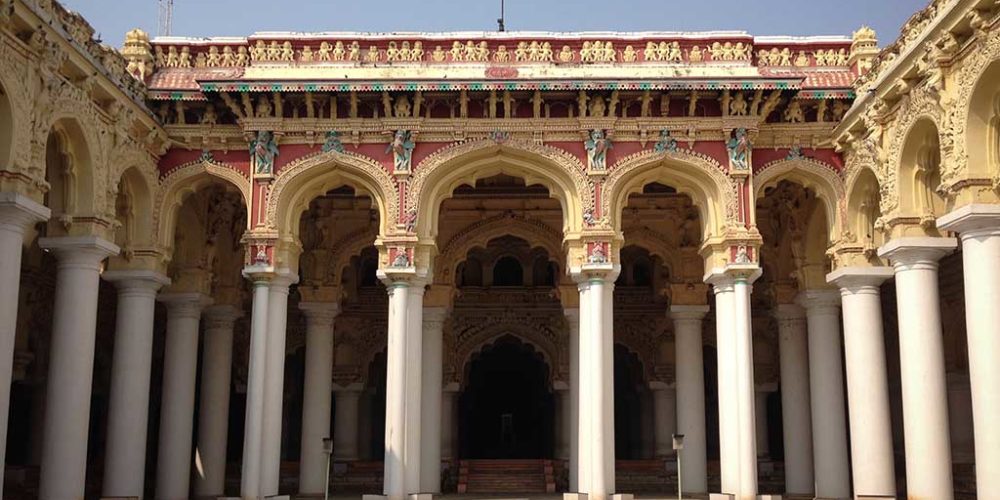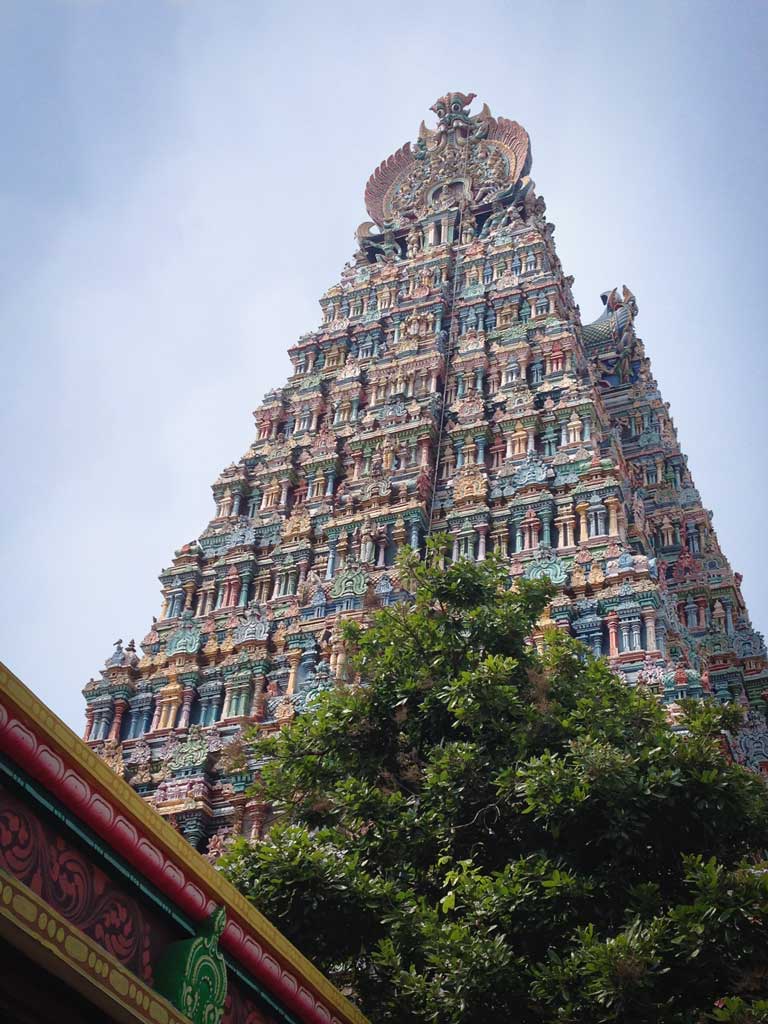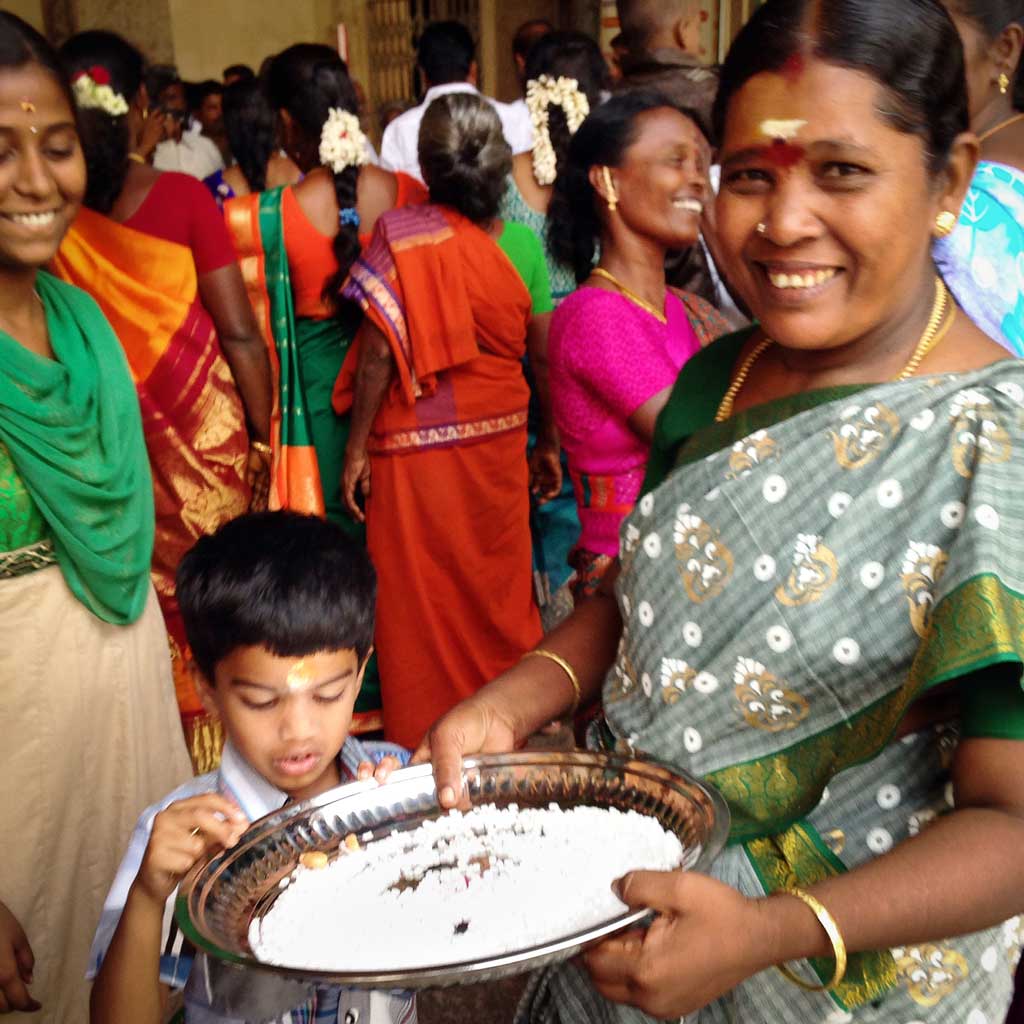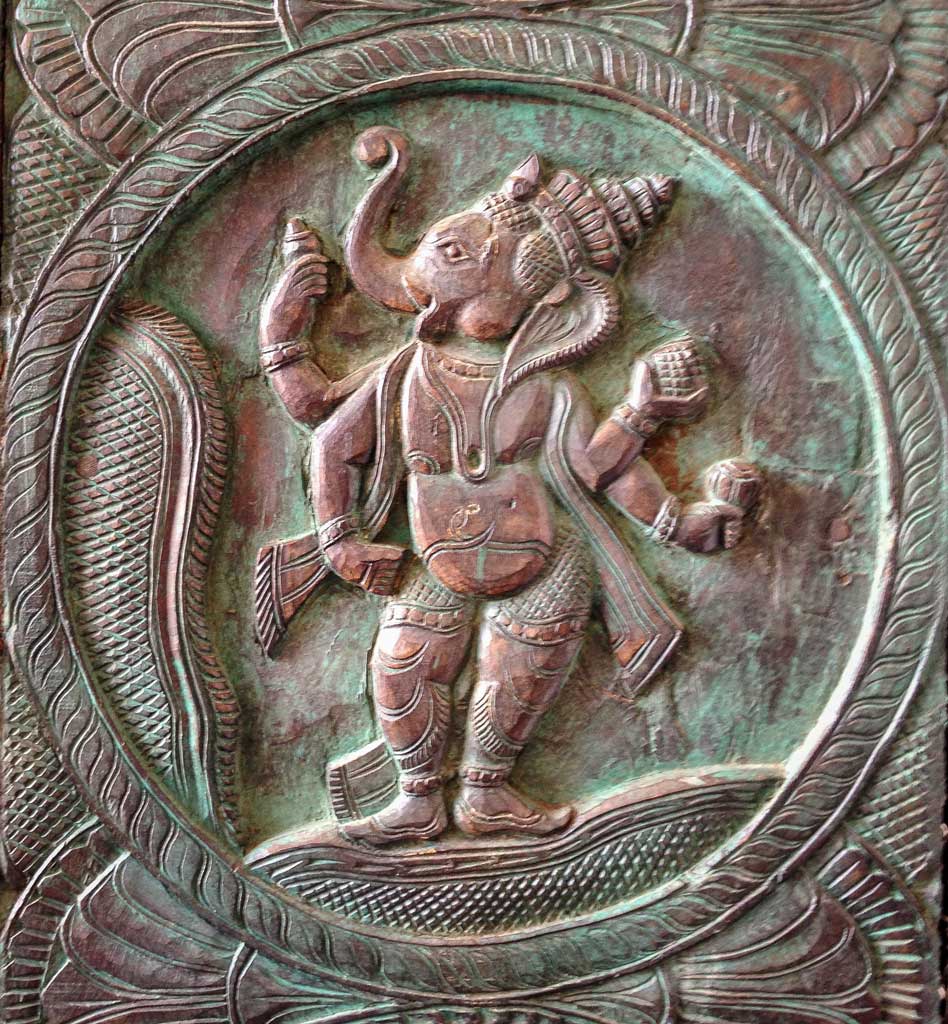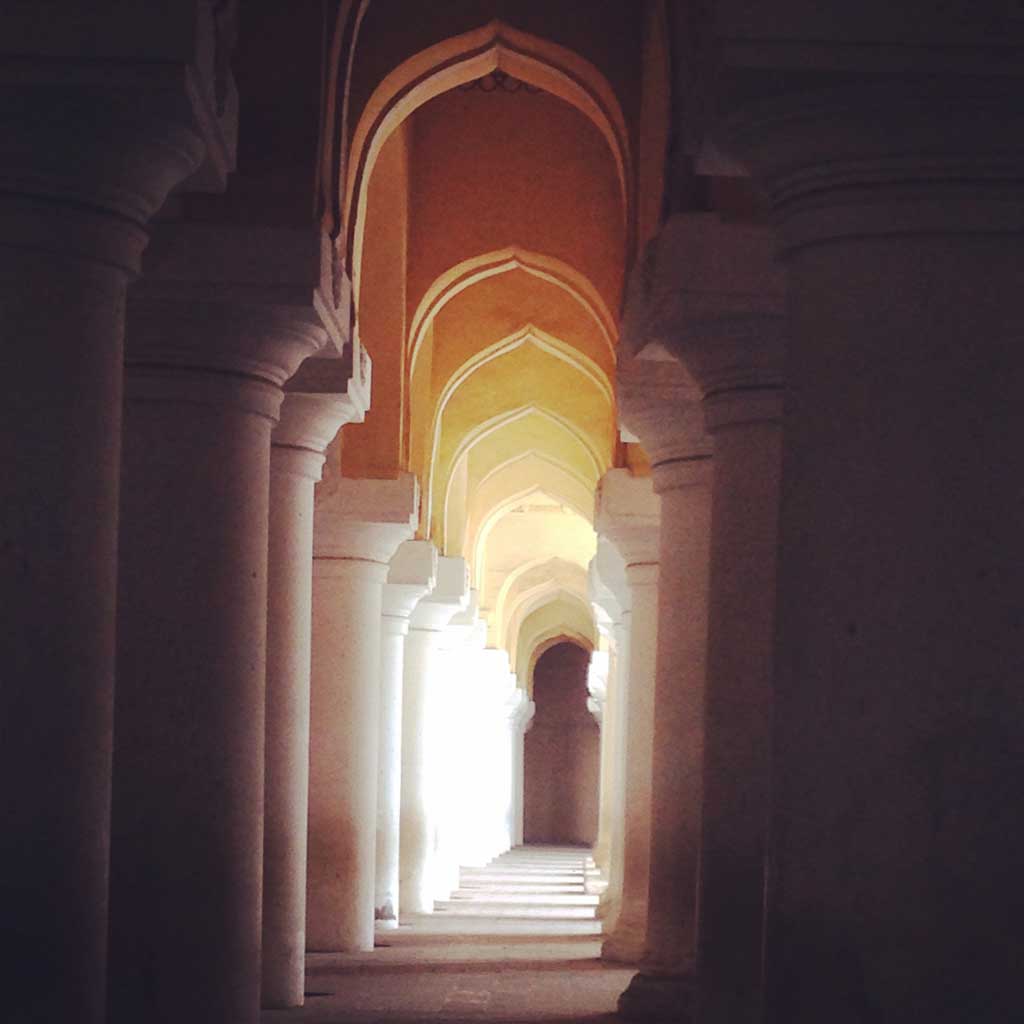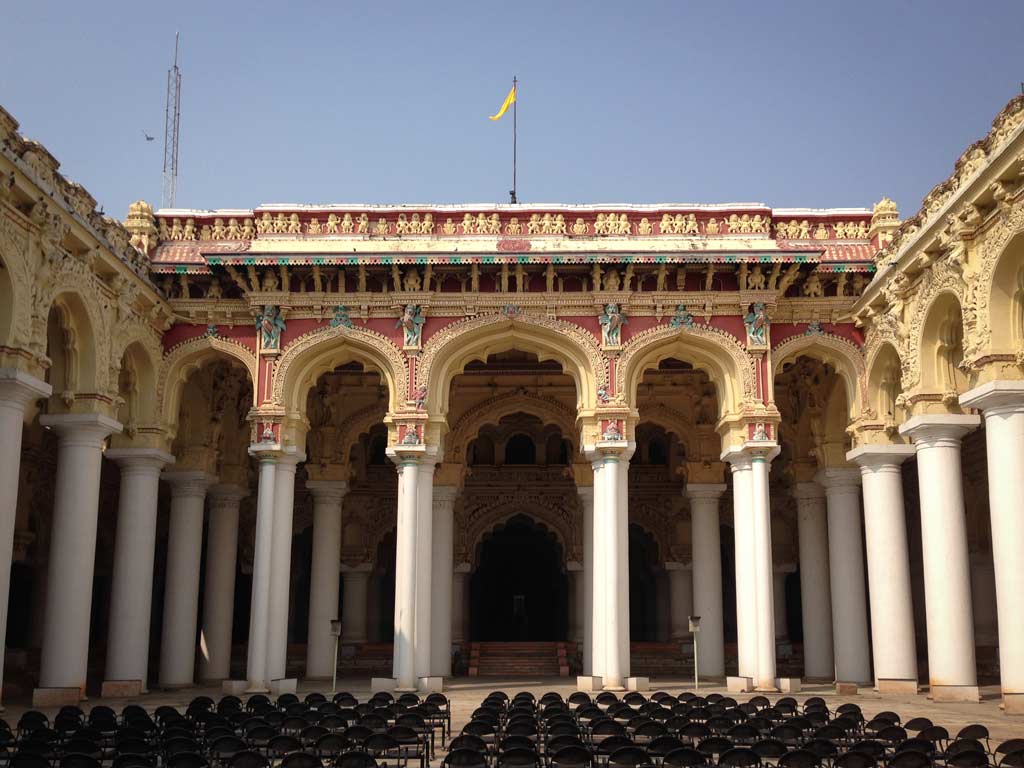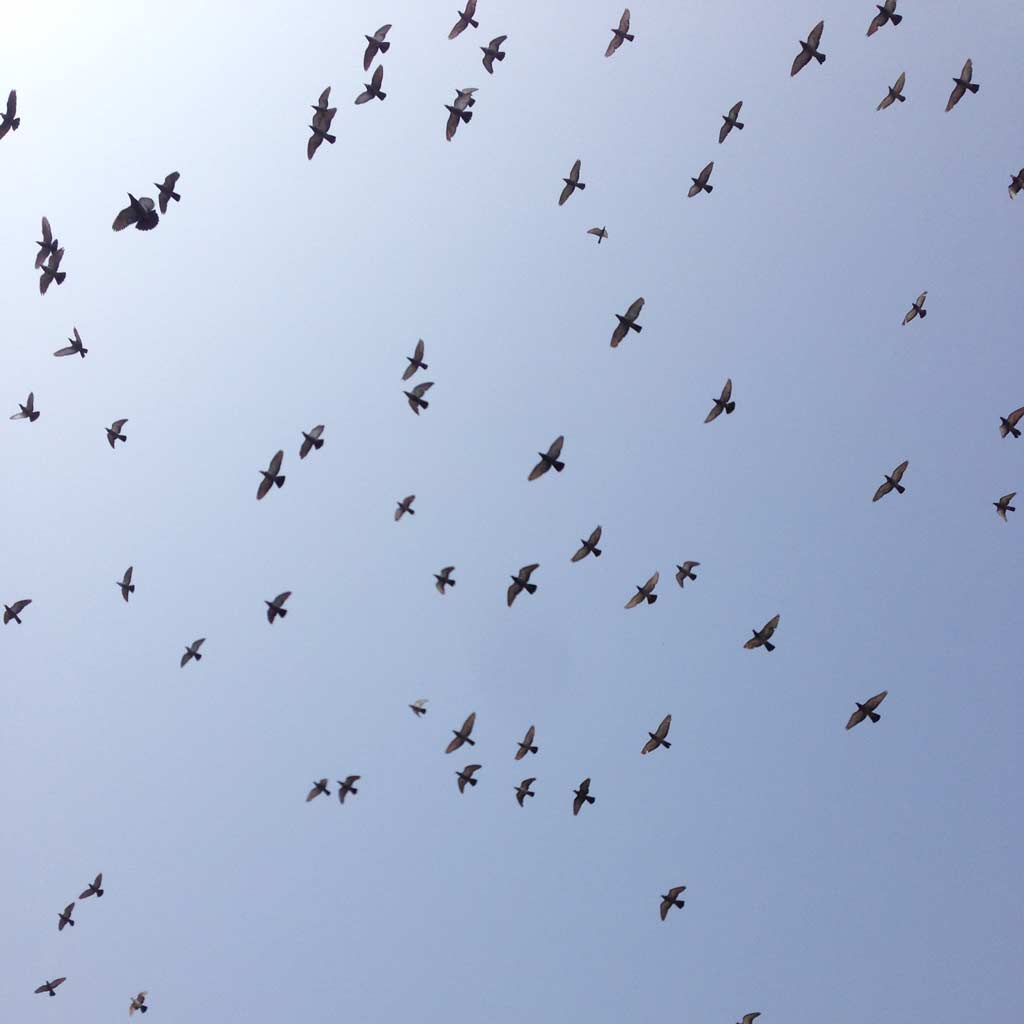If you’ve only got 24 hours in Madurai, we’ve got a lot of ideas for what to do. We’re excited for you.
Madurai is a bustling beehive of a 2500-year-old city. The River Vaigai flows through the centre of the city and pulses, millet, oil seeds, cotton and sugarcane grow on the fertile plains surrounding the area. Automobiles, rubber, chemical and granite manufacturing are the key industries.
Lying within 10 degrees of the equator, Madurai is also famed for its jasmine plantations. About 2000 farmers sell the flowers daily at the city’s morning flower market.
If you’ve only got 24 hours in Madurai to explore, the Meenakshi Amman Temple and the Nayakar Mahal Palace are the top sites to experience. Read along and we’ll also dish on our favourite places to stay.
The Meenakshi Amman Temple
This temple is devoted to one of Hinduism’s principle Gods, Lord Shiva and his wife, the Goddess Parvati. That is, in their forms of Sundareswarar and Meenakshi.
The complex is an impressive 45 acres with four entrances and 14 gopurams (towers), the tallest being 170 feet tall. Two of the gopurams are gold for Shiva and Parvati and the rest look like towering ornately carved pyramid shaped layer cakes. Each of the layers is decorated with stories of the daily lives of the Gods painted in full technicolour glory.
Non-Hindus are not allowed into the sanctum sanctorums but there is much else to see and experience. An active temple with 25,000 worshippers visiting daily, this place pulsates with life.
Women come to the temple dressed in their finest silk saris. Important life milestones are marked. Celebrations of weddings, one year anniversaries of children’s births or milestone birthdays happen in tandem with temple-goers simply attending to their daily prayers or pujas.
A must-see in the complex is the Hall of Thousand Pillars. There are actually 985 intricately carved pillars. They are arranged so that no matter where you stand they look to be in rows. You’ll want to spend some time up close with them as each is a fascinating example of Dravidian craftsmanship dating back to the early 1600s. The space also doubles as an art museum with extensive collections of photographs and coins.
While this temple is definitely on our list of must-see attractions in South India, it does have a few things that detract from it. We share them here in the spirit of you being ready to overcome them should they happen to you.
Temple shoes
First, it costs a few rupees to leave your shoes at the entrance of the temple. That is nothing new. It is the rule for most temples. Just bring some small rupee notes and socks to wear if you don’t like going barefoot.
Or, just surrender to this and enjoy the feeling of your feet in full contact with the earth and the ancient granite and marble of the floors. Depending on the temple, sometimes the stones have absorbed the day’s sun rays. You can feel the lingering warmth travel up through your bones.
Having your full bare foot in contact with the earth is like the ultimate reflexology massage. Westerners rarely go barefoot but having contact with the earth is an important aspect of Ayurvedic medicine.
Temple tchotchkes
Another matter are the hawkers that will sidle up to you and escort you to the entrance as you approach the temple. They have tchotchkes of every sort. Their wares may not be anything you want or need so just be honest and kind when you say no and thank you.
Remember they are trying to make an honest living. They are not begging but working very hard doing what they do. Sometimes, you might actually want to buy some little bracelets or postcards. Feel free to negotiate with them and again, keep small amounts of rupees handy, instead of having to dig out your money belt and open it for large bills.
Temple soft sell
Lastly, if you are with a guide, and are invited to leave your valuables in the shop of a local merchant, there is a very good chance your guide has made a deal to ensure that you will visit that shop. Here’s how that works.
The shopkeeper will offer to guard your belongings while you visit the temple. Then, they might offer you a drink (there may be rum or whisky involved) and an education session about the rugs, jewelry or whatever they sell upon your return.
It’s all entertaining and highly hospitable so go with it if you are interested. The thing to watch for is that the process is a huge time stealer. And, sometimes the guides cut down your time in the temple because they have to allow time for potential shopping to happen.
You need to be wary of time sucks like this. Because, you need time to visit the second great attraction in Madurai.
The Nayakar Mahal Palace
Built in 1636, by the Hindu king Thirumalai Nayarkar, this is another architectural marvel of South India. It has a carved dome built completely without girders or rafters. There are 248 pillars that are each 58-foot-tall and 5 feet in diameter.
Light floats through the spaces from a central courtyard and is reflected back into the uplifting yellow, white and sandy tones of the paint and stone. If you are a photography bug, budget time to chase the light through the structures as Pauli-Ann did on our visit. If you return in the evening there is also a light and sound show.
We didn’t make the show at the temple because our day in Madurai was stifling hot and overwhelmingly noisy. With the jet lag of overseas travel, all the buzz and hum of the city was a bit too much. This is where choice of hotel is important.
Where to Stay in Madurai
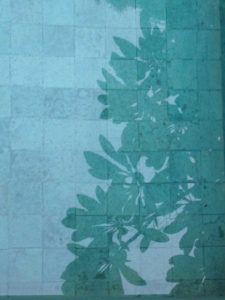
If you’ve only got 24 hours in Madurai, The Heritage Madurai provides a welcome sanctuary. You’ll want to save some of your time to enjoy all it offers.
A former British Army Club during the time of the Raj, renowned Sri Lankan architect Geoffrey Bawa built it using local granite and South Indian architectural details. Now, Tamil-owned by the Grand Luxe hotel group, Vinod Jayasinghe, restored it using traditional materials but with all the modern conveniences.
The spa is authentic. The therapists have received proper training and are truly centred on restoring and rejuvenating their guests. There is an Ayurvedic doctor available for consultation and the setting is as peaceful as it is tasteful. Between a therapeutic massage and the plunge pool at our villa, one of 72 on the premises, we were able to fully rest and recover before continuing our journey to Karaikudi in Chettinad.
Heritage Madurai – 11 Malakkai Main Road, Kochadaui, Madura – 625 016
Note: This post was not sponsored but done through independent research by the author and photographer in 2014. Sponsored or not, all words and photos are our own.

